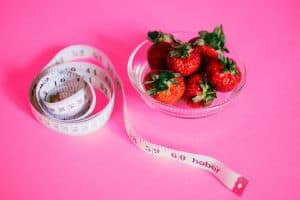- PhentermineLearn more about phentermine and how to get the most from your weight loss journey.
- ResourcesAdditional information and tools to help you make the most of your effort.
- AlternativesLearn more about the most popular weight loss medications and science-backed supplements
What You Should Eat Based On Your Body Type
Published on December 9, 2024

Since 1975, obesity rates have skyrocketed, tripling according to the World Health Organization (1). Everyone talks about the big health risks of being way overweight. But here’s a sneaky tip – even a few sneaky pounds, the kind that don’t make your pants tight, can throw your health and happiness for a loop. If you’re thinking, “Not me!” – well, think again. This conversation is for anyone who loves feeling great. And why hang out a bit longer? Because discovering the under-the-radar ways even a little bit of extra weight can trip you up might just be the trick you need.
It is estimated that about half of the female population are following a diet to help them lose weight at any given point in time (2). Dieting habits often start during teenage years, with as many as 90% of teenagers reporting that they have at least tried out a diet once. Even though so many people are on a diet, the prevalence of obesity is still on the rise.
One of the major factors that are making it hard for people to lose weight is the fact that they often do not follow a diet that is appropriate for their body type. People often dress according to their body type, but when it comes to dieting, they usually do not consider the fact that their body type and how fat accumulates within their body might impact how successful a particular diet could be.
How To Determine Your Body Type
The first step to diet by body shape would be for a person to determine what body type they have. Without realizing their specific body type, a person would continue to following generic diets that do not take into account particular food groups that work more effectively with how their body is shaped, and eliminate specific foods that are known to cause excessive weight gain in the particular body type.
Research has proven that body type does have an impact on how a person would respond to a specific diet. According to one report (3), diet by body shape was analyzed by a team of scientists. Obese adult participants were included in a study that tested the effects of both low-carb and low-fat diets on a group the particular group of individuals.
In the study, the researchers who analyzed the participants found that a low-carb diet is more appropriate for people who have excess fat in their abdominal area. On the other hand, the low-fat diet seemed to produce more effective results in people who had more fat accumulating in the thighs and other areas of their body.
The same study also found that there are certain factors in the body that contribute to the shape – for example, the accumulation of fat in the waist of a person is associated with increased insulin secretion. Among people with a lower secretion of insulin, it was found that more weight accumulates in the hip region instead.
Below, we take a look at common body types that people should be aware of – our readers should closely consider these body types in order to determine where exactly they fit in.
The Apple Body Type
The apple body type is relatively common and refers to a torso that is thick, along with shoulders that is broad. On the other hand, the arms and legs, as well as the hips, are usually smaller than the shoulders and the torso. In people with an apple shape body type, excess fat is usually mostly stored in the stomach region. This causes the development of abdominal obesity.
The apple body type is considered an especially dangerous shape since an accumulation of fat in the abdomen leads to fat collecting around a person’s organs. This causes a significant increase in the risk of metabolic syndrome, including insulin resistance, type 2 diabetes, and heart disease.
The Pear Body Type
The next shape would be the pear body type. In this case, a person would have a waist and shoulders that are seemingly small. On the other hand, however, their hips and their thighs would usually be larger. This leads to a body type that is shaped similarly to a pear – hence the name of this particular body shape.
The pear body type is considered less harmful than the apple body shape, since fat tends to accumulate in the thighs, as well as the hips, instead of the stomach. This leads to the development of gluteofemoral fat. Still, there are complications associated with this body type – the excess fat causes joints to undergo extra stress. The fat also affects the cardiovascular system and makes it difficult to find the perfect fit when buying a pair of jeans.
The Hourglass Body Type
Often referred to as an “hourglass figure,” many women desire this particular body shape. It refers to shoulders that are relatively broad, along with hips that are larger. The waist and torso, however, are usually more defined and smaller than the other areas. This leads to a shape that resembles an hourglass – once again, hence the name of this body type.
With the hourglass body type, fat is usually stored evenly in the upper part and the lower part of the body, but less fat is stored in the stomach region than with some other shapes, such as the apple body type. Many people find that they do not immediately notice weight gain when they have an hourglass body type – this, however, does not mean there is no need for concern. Excess body fat can be dangerous – even when not particularly stored in a specific part of the body, such as the stomach.
The Ruler Body Type
People with a ruler body type is often considered the luckiest, since weight gain is often a problem among these people, instead of finding it difficult to lose weight. The ruler body type refers to a person that is naturally thin. The individual would usually have almost no curves. If they do gain some weight, they may develop some curves, but it would usually just be minimal.
It should be noted, however, that even though rulers tend to appear thin, a higher body fat percentage may still be present – and this can put a person at certain risks, even when the body fat isn’t visibly noticeable. Among people with this body type, this is often a particular issue as they consider themselves lucky – they can skip out on going to the gym and eat what they want, and they would still have a thin appearance.
How To Diet By Body Shape Or Type
Now that we have taken a look at the different body types that people have, we are moving on to looking at how to diet by body shape. Each body shape has been found to respond differently to certain foods – as we had noted earlier when we looked at a publication where scientists compared the effects of a low-fat diet to that of a low-carb diet.
Below, we will once again take a look at the different body types, but this time we will consider particular dieting habits that may be helpful, as well as look at some food options that are not ideal for each body shape.
Food Options for Apple Body Shape
People with an apple body shape has excess fat in their stomach – and, as we described already, studies linked a low-carb diet to positive effects in this particular scenario. This body shape demands healthy fats in a diet in order to reduce fat – with an emphasis on the “healthy” part. There are many different types of fat that a person can consume, but only some of them are truly healthy and good for the body – as well as for burning excess fat.
Omega-3 fatty acids should definitely form part of a person’s diet if they have an apple body type. Monounsaturated fats are also good. It would be a good idea to start cooking with an option like coconut oil – this type of oil is packed with good fats and does not contain the high amounts of “bad” fats that are often found in some of the more “traditional” cooking oil options.
Foods that include healthy fats include chia seeds, walnuts, salmon, avocados, whole eggs, extra virgin olive oil, dark chocolate, and more.
High-carb foods should be limited in people with apple body types. This would mean restricting the consumption of breakfast cereals, junk food, pasta, bread, and beverages with added sugars or sweeteners.
Food Options for Pear Body Shape
People who have a pear body shape should primarily focus on building some extra lean muscle mass while they are trying to reduce the amount of excess fat in their body. Lean proteins should make up an important part of a person with a pear body shape’s diet. The lean proteins will help to improve muscle mass – protein also helps to curb appetite and further contributes to fat loss.
Healthy fats should also be an important part of a diet for a person with a pear body type. This would include similar options as for a person with an apple body shape – coconut oil, extra virgin olive oil, fatty fish, nuts, and more.
Foods with added sugars should be limited. This would include bread, peanut butter, instant oatmeal options, ketchup, and some types of pasta sauces.
Food Options for Hourglass Body Shape
A person with an hourglass body type should focus on smart snacking when hunger strikes. In these cases, complex carbs should be the preferred options when it comes to loading up on carbohydrates. Vegetables should be a preferred snack type – raw veggies are great. Some vegetables are high in carbs but still does not cause an excessive load on calories. They also contain fiber, leading to an improvement in satiety.
The most important foods that should not be included in this person’s diet would be treats that are high in fats or sugar, as well as pasta and ice cream. Candy should also be significantly restricted.
Food Options for Ruler Body Shape
The ruler body shape is not too complicated. A person is advised to eat just the right amount of food usually – when they feel full, they should stop eating. It is important that a person with this body type balance the macronutrients they consume – this would include proteins, fats, and carbs. All three macronutrients should also be obtained from healthy sources, instead of food bought from fast food chains.
Conclusion
An important factor that may contribute to weight loss difficulty is a diet that has not been adjusted to a person’s particular body shape.
There are various body shapes, and each has been associated with a specific way in which fat accumulates in the body. For this reason, a diet that works effectively for one person may not be an appropriate option for another individual. Here, we looked at the different body types and appropriate ways to diet by body shape.
References
(1) https://www.who.int/news-room/fact-sheets/detail/obesity-and-overweight
(2) https://www.livestrong.com/article/390541-facts-statistics-about-dieting/
(3) https://content.time.com/time/specials/2007/article/0,28804,1626795_1627112_1626457,00.html


